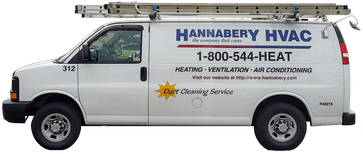How Do Heat Pumps Work?
Topics Covered:
- Heat Pump Technology:
- Heat Pump Facts:
- Heat Pump Operation:
- Heat Pump Characteristics:
[Page 1 of 3]
"Studying may begin"
Heat Pump Technology:
Heat pumps offer the most energy efficient way to provide heating and cooling in many applications, as they can use renewable heat sources in our surroundings. Even at temperatures we consider to be cold, air, ground and water contain useful heat that's continuously replenished by the sun. By applying a little more energy, a heat pump can raise the temperature of this heat energy to the level needed.
Because heat pumps consume less primary energy than conventional heating systems, they are an important technology for reducing emissions of gases that harm the environment, such as carbon dioxide (CO2), sulfur dioxide (SO2) and nitrogen oxides (NOx).
Heat Pump Facts:
- Using direct combustion, (gas or oil) to generate heat is never the most efficient use of fuel.
- Heat pumps are more efficient because they use renewable energy in the form of low-temperature heat.
Heat Pump Operation:
Heat flows naturally from a higher to a lower temperature. Heat pumps, however, are able to force the heat flow in the other direction, using a relatively small amount of high quality drive energy (electricity, fuel, or high temperature waste heat). Thus heat pumps can transfer heat from natural heat sources in the surroundings, such as the air, ground or water, or even man-made heat sources such as industrial or domestic waste, to a building or an industrial application.
Heat pumps can also be used for cooling. Heat is then transferred in the opposite direction, from the application that is cooled, to surroundings at a higher temperature. Sometimes the excess heat from cooling is used for to meet a simultaneous heat demand.
Simply put, during a call for cooling, a heat pump will remove heat and humidity from your home and will transfer this heat to the outdoor air.
During the heating cycle, a heat pump will remove heat and humidity from the outdoor air and will transfer this heat to your home. This is possible because even 0 degrees Fahrenheit outdoor air contains a great deal of heat. Remember that your heat pump doesn't generate much heat it merely transfers it from one place to another.
Heat Pump Characteristics:
A Constant Heat...
A heat pump delivers a lower supply air temperature than a furnace over a longer period of time to provide a more constant heat. It may give you the impression that your system "never stops running", or "it feels like cold air". At times, the temperature of the air coming out of the vents is less than your body temperature so it feels like cold air. But it is still providing heat for your house. And when it can no longer keep-up with the heat loss of the structure, the 2nd stage or auxiliary heat will automatically energize, bringing on a much warmer heat.
Outdoor Water Run-Off...
During the heating cycle, you may notice water running off the outdoor coil. Moisture from the air is condensed on the outside surface of the coil where it gathers and runs off. This is normal.
Outdoor Coil defrosting...
At certain conditions (low temperature, high humidity), frost, even ice, may build up on the coil of the outdoor unit. In order to maintain heating efficiency, the system will automatically defrost itself. Steam rising form the outdoor unit is normal and is and indication of proper operation. The vapor cloud will only last for a few minutes. When the defrost cycle is completed, the system will automatically switch back to heating. Supplemental heat is automatically energized to maintain comfort during defrost.
Topics include: Heat Pump Tips, Maintenance, & FAQ's
How Comfortable Do You Want To Be?
[Must be in our service area]

